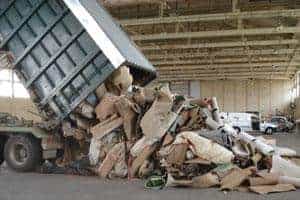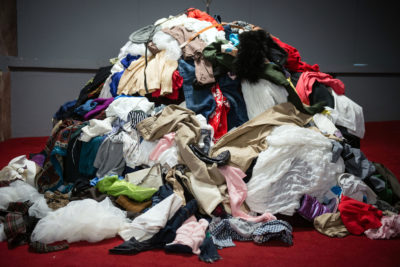Trade body Carpet Recycling UK has announced an “ambitious” voluntary target to reduce the amount of waste the carpet sector sends to landfill by 25% by 2015.
However, the trade body has chosen to focus on diverting more of the 500,000 tonnes of carpet waste currently sent landfilled each year into other avenues, such as energy-from-waste incineration, composting and recycling, rather than imposing a strict 25% recycling target, as had been previously mooted (see letsrecycle.com story).
The voluntary-led target was unveiled by Jane Gardner, coordinator for Carpet Recycling UK. Ms Gardner explained that while the target was “demanding” it would be achievable and she cited work done by manufacturing members of the association, who have set a zero post-industrial waste target for 2012.
Ms Gardner said: “This year, we've lifted levels of attendance and of ambition and set our sights firmly on specific targets to guide consistent and continuous reduction in carpet waste going to landfill.”
This year, we've lifted levels of attendance and of ambition and set our sights firmly on specific targets
Jane Gardner, coordinator, Carpet Recycling UK
The amount of waste diverted from landfill by the sector increased between 2008/09 and 2009/10 In 2008/09, 22,000 tonnes of material was diverted from landfill, this rose by around 20% to 26,000 tonnes in 2009/10.
Currently around 5% of carpet waste is being diverted from landfill, while 2% of material is specifically recycled.
The trade body said rates of recycling and reuse “held up well” despite the economic downturn and cutbacks in carpet production. It claimed that this demonstrated “the efforts of businesses in the carpet industry to reposition and gain a competitive edge in a depressed market”.
Outlets
Furthermore, Carpet Recycling UK said that the available outlets for recycling carpets had risen steadily, going from six in 2008 to 16 in 2009. This number is forecast to rise to 30 outlets by the end of 2010.
Ms Gardner also called upon UK manufacturers and importers of carpet that are not currently members of the trade association to join. Currently around 15 companies in the sector are still not affiliated with Carpet Recycling UK and Ms Gardner claimed their membership would help sustain the trade body's work.
She said: “Joining Carpet Recycling UK isn't just about being altruistic; the most obvious benefit of membership is improving your corporate responsibility profile and this in itself has a financial value.
“But companies who join also stand to benefit from direct cost savings – last year the association saved its members a total of £85,000 in landfill charges, and in tough times like these keeping costs down makes good business sense.”
A total of 115 delegates from across the carpet supply and recycling chain attended the event, which was held at the Institute of Engineering and Technology in Birmingham.












Subscribe for free